Launcher inc. is a company making metal 3D printed rocket engines. The so far operating under the radar firm has spent the past year using EOS metal 3D printers to make rocket components. They’ve then done firing tests with these components and are inching close to making rocket engines. Where other rocket companies are bold, brash, big and all ego, Launcher seems understated, small and agile. A different kind of rocket company.
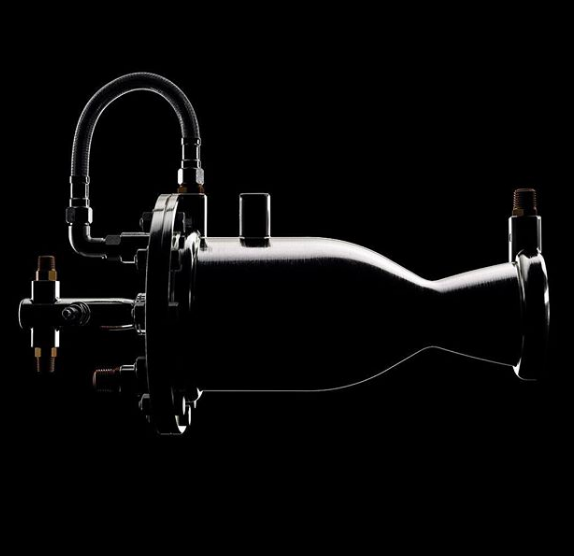
The Launcher Engine
With 3D printing reduction in part count, complex assemblies, weight savings, faster development times, more iterations and lower costs are some of the key reasons to use the technology. These elements all come into play in aviation and are exaggerated even more in rockets. Reducing the numer of parts significantly means lots less tooling, molds, casts, production steps and costs. If you can then have an increased freedom to design innovative shapes as well then you have an edge over competitors. The future of aviation will be shaped by 3D printing. The desktop, construction, educational, medical? I have no idea if 3D printing will, in the long run, make an impact, I think it will but cannot be sure. In aviation, however, the cost, speed and geometry advantages will make a difference today. 3D printing will make or break companies in aviation and give new entrants exciting opportunities to out 3D print and out engineer the established players such as SpaceX and the one with the guy who waterskis with flight attendants. All in all an exciting opportunity for small group of people to make a difference.
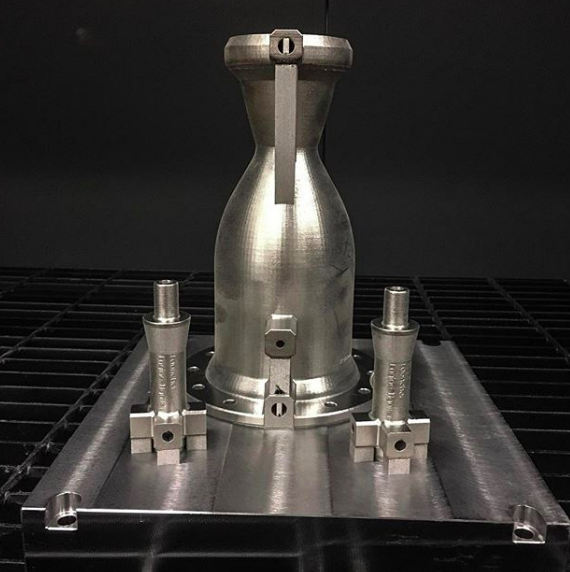
Launcher engine and two injectors.
What I really like in Launcher is not only that they’re using 3D printing where it will make a difference but also that they seem humble in the face of the challenge and see it as a ten year journey. We interviewed the team at Launcher to find out what they have been up to and plan to do.
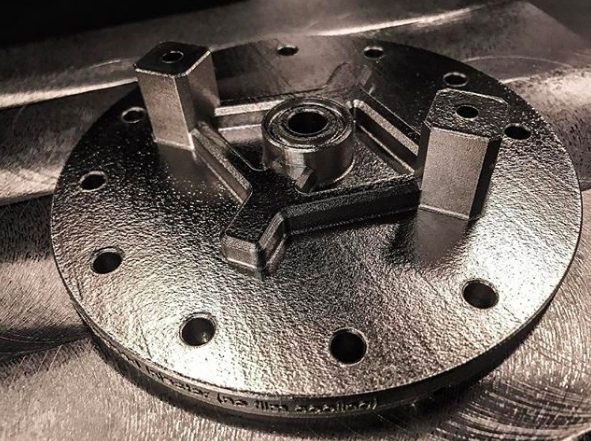
Launcher Engine-1 Rocket Injector 3D printed on EOS M290 metal 3D Printer
Are you making a launcher for a Cansat? Picosat?
Launcher is building an orbital launcher vehicle over a 10 year timeline. It all starts with engine development. We are 1 year old as a startup and have a small team. Currently, we are testing our 1/40th size development engine E-1 (Propellants: LOX/RP-1, Regen cooling, printed on EOS M290 in Inconel 718 in 3 parts, 500 lbf thrust, augmented spark ignition). Over the next 3 years, we are building E-2 – a 3D Printed 22,000 lbf thrust, LOX/Rp-1, staged combustion engine (turbo pump fed). The E-1 helps us validate the design of the 3D printed combustion chamber and internal cooling channels before applying to the 40x larger E-2.
Can I buy the launcher? Or will this be a service?
Our customers are small and nanosat companies. Our service will be to launch their payload to the desired orbit and schedule.
Sales will not start until we reach orbit with a test vehicle by 2026.
What machine do you print it on? EOS?
EOS M290 from our partner Morf3D and others.
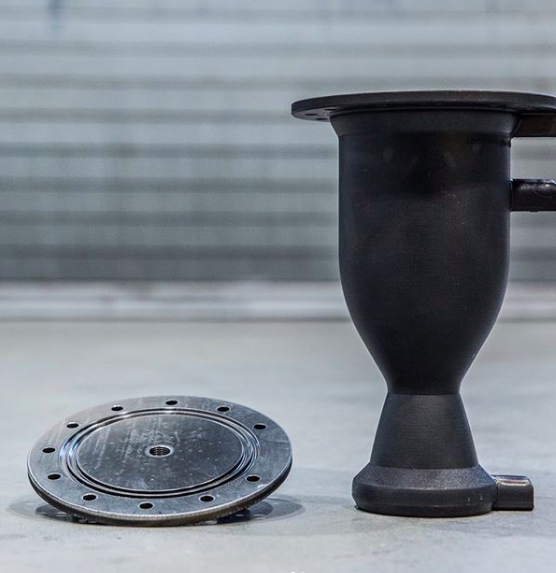
Launcher 3D Printed combustion chamber.
What are the advantages of 3D Printing rockets?
Advantages: Ability to iterate design and build internal geometries for cooling channels without expensive tooling and unique craft skills in brazing. Part cost. Disadvantages: limited part size (but this is changing), a single metal combustion chamber (typically a copper alloy liner is used with outer shell in Inconel).
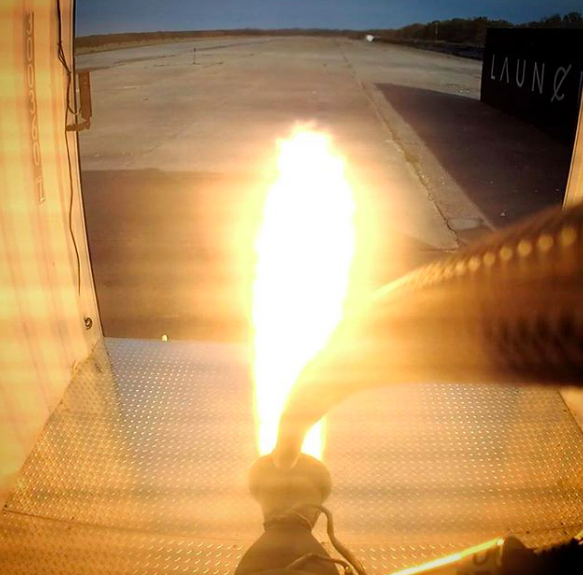
Hot fire engine test
Are you only doing the engine or much more?
We plan to print as many parts of our launch vehicle as possible – including turbomachinery and valves.
What materials are you using?
Inconel 718

Launcher Test fire rig
Do you also use 3D printed polymers?
No
Have you thought of using Hastelloy?
We tested Haynes 282 (Editor: HAYNES 282 is a high strength Alloy (Ni-19Cr-10Co-8.5Mo-1.5Al-2.1T or a nickel iron niobium chromium niobium-molybdenum-titanium-aluminum alloy, I call it the kitchen sink. Its part of a family of interesting materials called superalloys or gamma-prime-strengthened superalloys. Compared other materials its manufacturability, creep strength, thermal stability makes it a good candidate for turbine engines and other aerospace applications. Hastelloy is a similar nickel-molybdenum superalloy with high corrosion, chemical and strain resistance. Inconel nickel chromium columbium niobium molybdenum alloy with high strength and corrosion resistance. These materials are all rather exotic and used in turbines, engines and very high end applications. Superalloys is the stuff that keeps on working when everything else has blown up.)
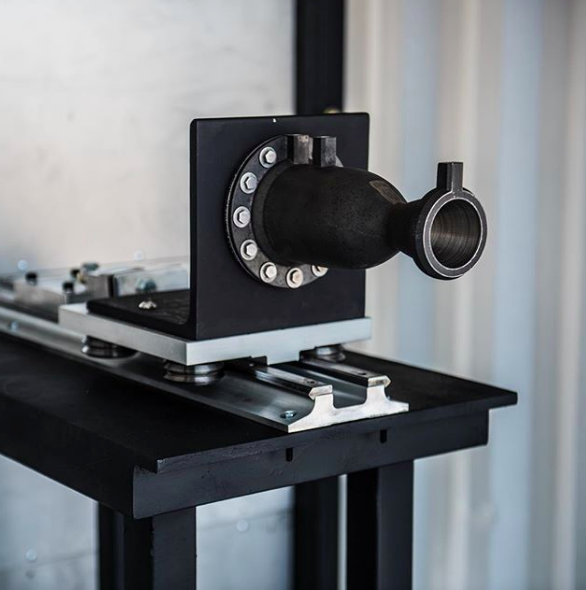
Launcher test stand
Are you worried if it doesn’t work then people will write headlines such as Failure to Launcher?
Failures in testing are part of the process. You need funding and team commitment to get through them and end up with a realible product or machine.
Images: Launcher/John Kraus.
Subscribe to Our Email Newsletter
Stay up-to-date on all the latest news from the 3D printing industry and receive information and offers from third party vendors.
You May Also Like
Nylon 3D Printed Parts Made More Functional with Coatings & Colors
Parts 3D printed from polyamide (PA, Nylon) 12 using powder bed fusion (PBF) are a mainstay in the additive manufacturing (AM) industry. While post-finishing processes have improved the porosity of...
3DPOD Episode 193: Flow and What’s Possible in 3D Printing with Ricky Wildman, University of Nottingham
Ricky Wildman is working on 3D printing pills, but, as Professor of Multiphase Flow and Physics at Nottingham, he does a whole lot more. His research encompasses the characterization of...
3D Printing Webinar and Event Roundup: March 17, 2024
It’s another busy week of webinars and events, including SALMED 2024 and AM Forum in Berlin. Stratasys continues its in-person training and is offering two webinars, ASTM is holding a...
3D Printed Micro Antenna is 15% Smaller and 6X Lighter
Horizon Microtechnologies has achieved success in creating a high-frequency D-Band horn antenna through micro 3D printing. However, this achievement did not rely solely on 3D printing; it involved a combination...





























